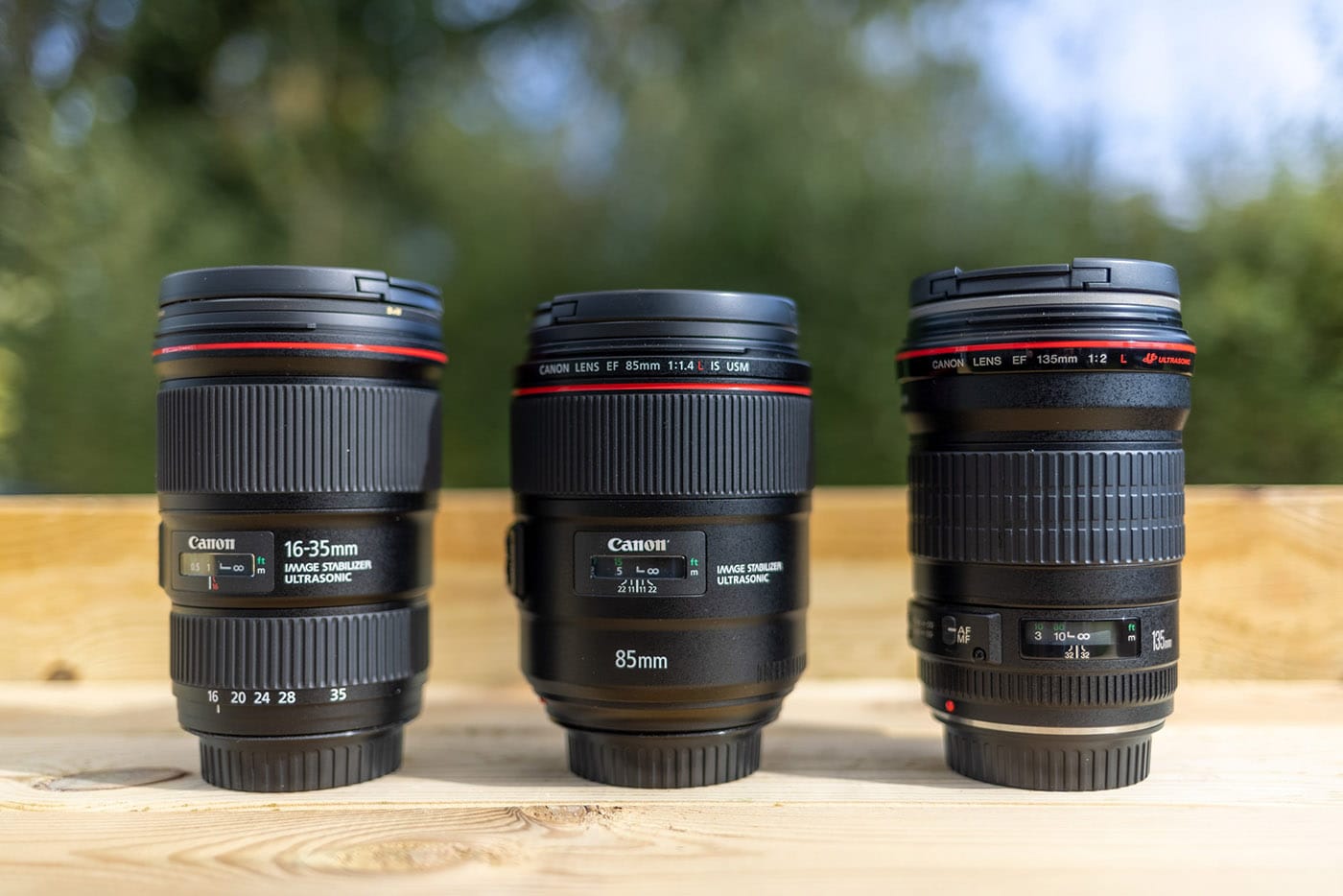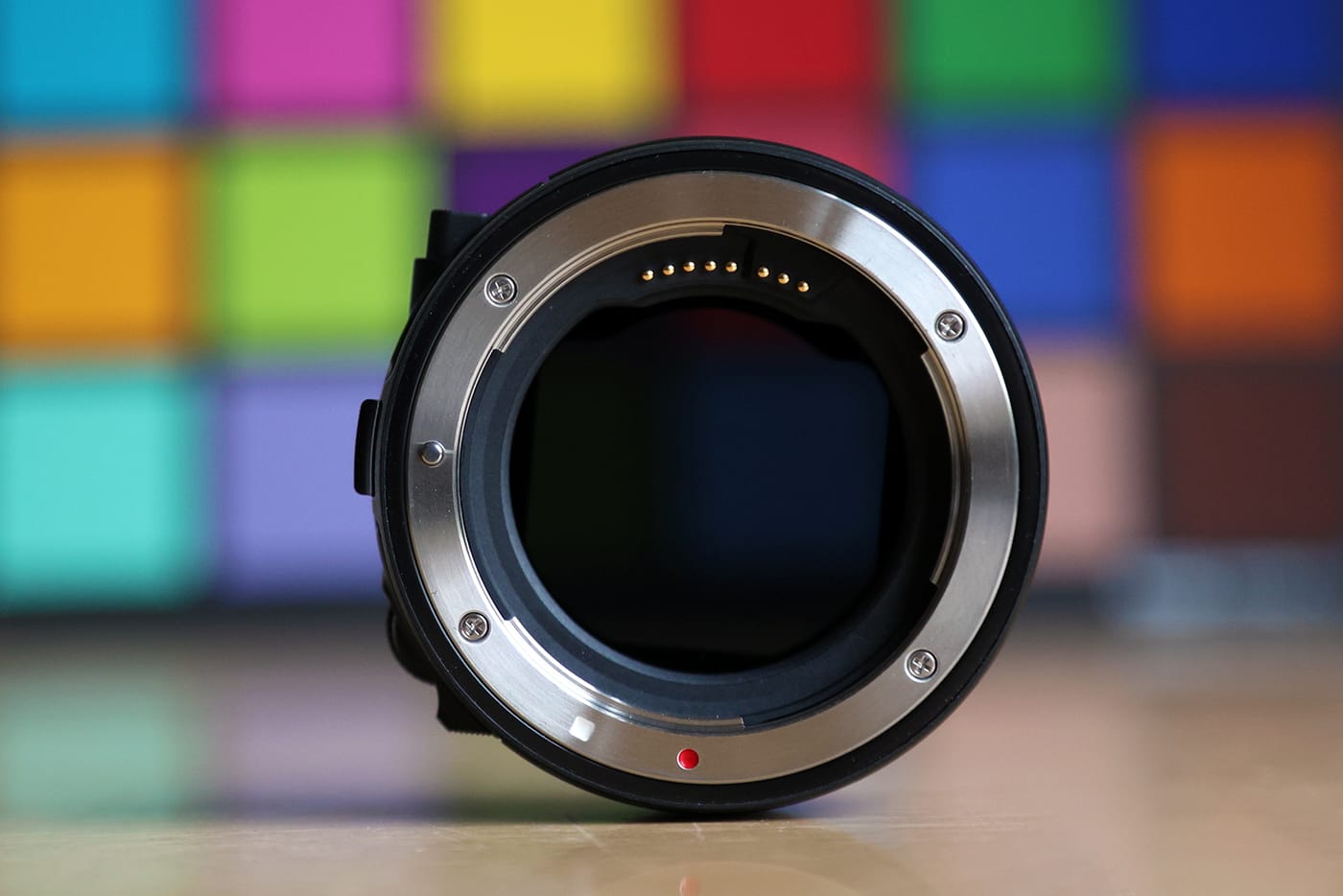In the short few years since the introduction of their full-frame mirrorless RF-mount, Canon has been steadily releasing lenses for the new mount. Or should I say replacing lenses, because in that same time-frame loads of EF-lenses have been officially discontinued or otherwise mysteriously vanished from stock. It's clear that Canon wants you to give up EF, and invest in some tasty mirrorless glass... But should you?
Of course, some of the newly released RF-lenses simply have no EF counterpart. Lenses like the 28-70 f/2, 600mm f/11 or the innovative 15mm f/2.8 Dual Fisheye simply didn't exist before the RF-mount. And then there are lenses whose optical designs haven't been updated since the analog era (like the 50mm f/1.2 for example). In those cases, the RF-versions offer a compelling argument for buying into the RF-system.
But for many more recent EF-lenses the advantages of switching to RF aren't as clearly cut. For filmmakers especially, sticking to EF might actually have a lot of advantages. I'll list some of those advantages below:
EF-lenses are cheaper
The most obvious advantage of EF-lenses over RF-lenses is that currently the EF-versions are a lot cheaper than their RF counterparts. Going for EF might save you up to 50% in some cases! Canon are now slowly releasing some more affordable lenses, but most of them are still more expensive than the Ef versions. The second-hand market for EF-lenses also is a lot bigger, allowing you to get even better deals. As the RF system matures, lots of affordable EF lenses will hit the second-hand market in coming years.
While some of the older EF lens designs don't quite hold up on modern high megapixel bodies like the Canon R5, most of the lenses released in the past 15 years outresolve those sensors with ease. In fact, when the 50-megapixel 5Ds was released in 2015, Canon issued a list of lenses that were sharp enough to work with that camera. Some lenses notoriously missing from this list have gotten updates since to improve their resolution. Lenses like the 35mm f/1.4L II, EF 70-200mm f/4L IS II and 16-35 f/2.8L III can now be safely added to this list.
 Both the fairly recent 16-35mm f/4 and 85mm f/1.4 already have RF-'replacements'. The much older 135mm f/2 doesn't exist in RF-mount yet.
Both the fairly recent 16-35mm f/4 and 85mm f/1.4 already have RF-'replacements'. The much older 135mm f/2 doesn't exist in RF-mount yet.
EF-lenses are compatible with almost every other lens mount
If you work with different camera-systems (or switch systems every few years...) EF-glass can be easily adapted to whatever system you please. I've adapted my EF-lenses to FujiFilm, Sony, Panasonic, Blackmagic, Canon EF-M and even the Samsung NX1. Depending on the adapter you sometimes lose continuous autofocus, but compared to buying a whole new set of lenses, that's a small price to pay. Because of their short flange-distance RF-lenses can not be adapted to other systems other than the RF-mount.
EF-lenses allow you to use the variable ND adapter
Besides the standard EF-RF adapter, Canon also released an adapter with a built-in variable ND. This adapter has become my #1 reason to stick with EF glass: it's just so convenient to have the variable ND in an adapter between the lens and body instead of bringing ND-filters for different lens sizes or attaching/removing ND's and step-up rings. Although it might seem a little pricey for what it is at first, it saves you a lot of money compared to buying different variable ND filters for every lens you own. It's like having a built-in variable ND, but much more gradual control. Because the adapter contains a removable filter-tray, you can even swap-out the ND for other filters like a circular polarizer or clear filter. I love it!
 The Canon drop-in variable ND adapter. A wheel on the side allows you to dial in the strength of the ND.
The Canon drop-in variable ND adapter. A wheel on the side allows you to dial in the strength of the ND.
EF lenses are generally smaller and lighter
Although Canon promised that the new mount would make it easier to create high performance lenses with less glass, we haven't really seen that come to fruition yet. The most extreme example being the RF 50mm f/1.2 which comes in at almost double the weight of its predecessor! While most other RF lenses don't go quite so extreme, the trend seems to be 100-300 grams of added weight for the RF version. And while a lens like the RF 70-200 f/4 is actually significantly smaller than its EF counterpart, it comes at the expense of extending out once you actually use it.
Most EF-lenses have a mechanical focus ring
Most EF-lenses have a mechanical focus ring. This means turning the focus ring mechanically moves the glass-elements inside the lens for precise and repeatable focus. Conversely, all new RF-lenses have so-called STM motors where the focus ring is not mechanically coupled to the lens. Instead, the movement of the focus ring sends an instruction to camera body, which in turn instructs the lens to change the focus. This can make it much harder to get repeatable focus. Another downside is that STM-motors require power from the body, while the USM-motors used in most EF-lenses also work without any power. This might not seem important, but makes a big difference if you want to adapt your lenses to camera bodies that do not provide power to the lens, or if you're using a so-called "dumb" (non-powered) adapter.
Conclusion
Although the RF-mount opens up a lot of new optical possibilities, your current collection of EF-lenses hasn't become worthless all of a sudden. In fact, there are a lot of advantages to holding on to your EF-glass: they're cheaper, can be easily adapted to other mounts and allow you to use all sorts of filter-adapters. And despite the click-baity title of this post, maybe the best way forward is to mix-and-match: hold on to your favorite EF lenses and add some of the innovative new RF designs.
